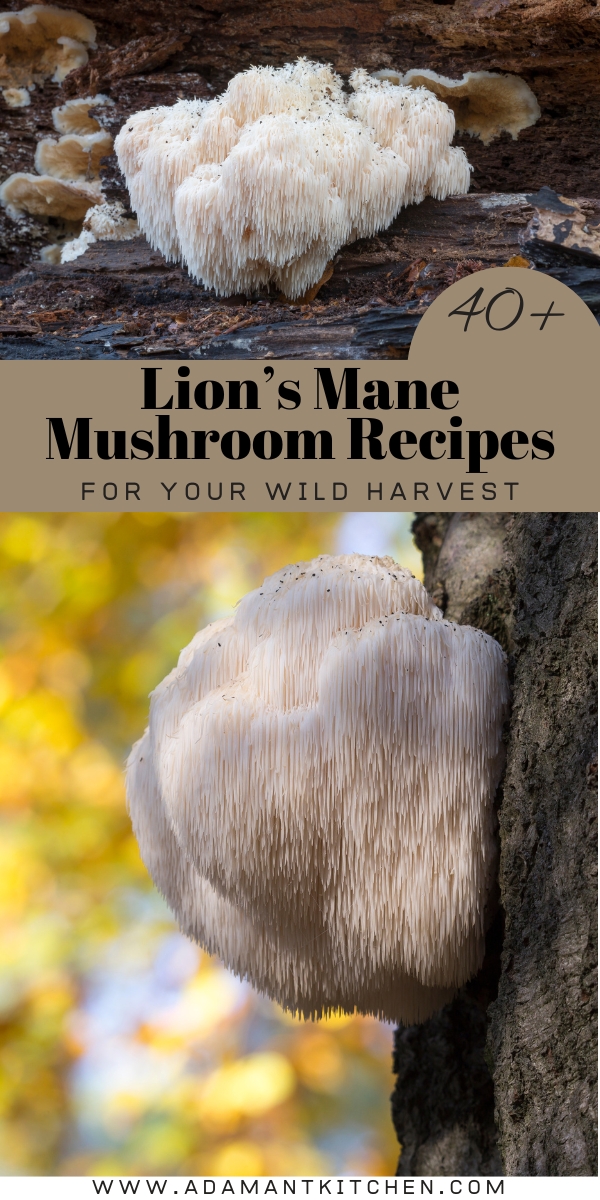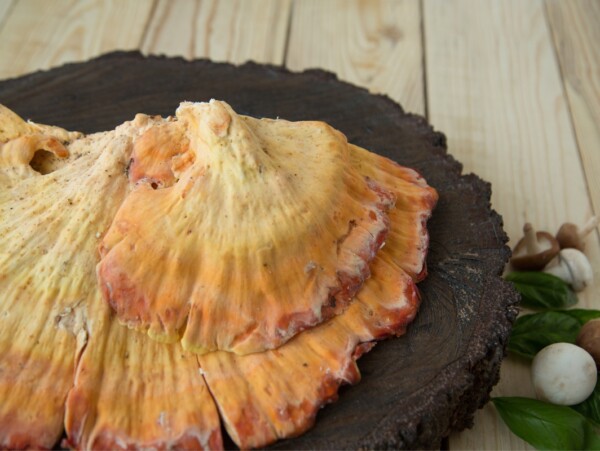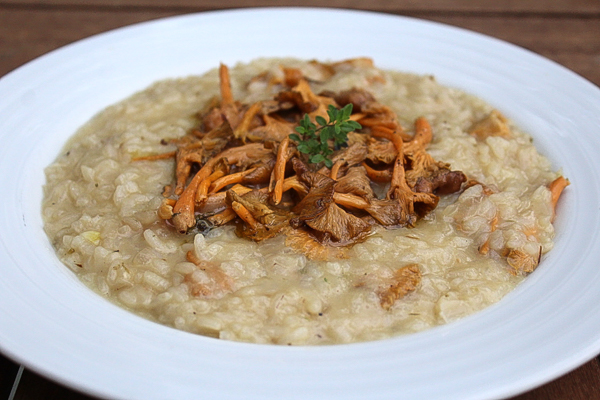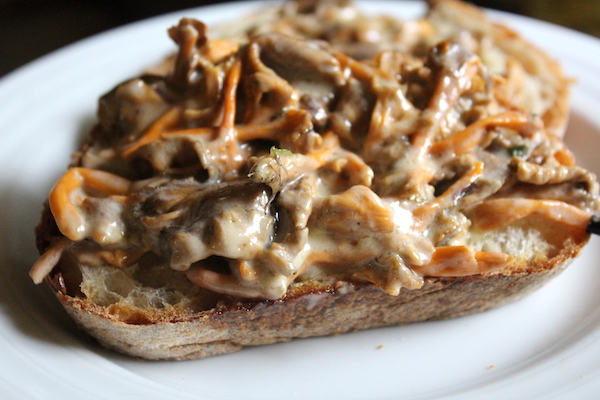This post may contain affiliate links. Please see our disclosure policy.
Lion’s mane mushrooms have long been touted for their medicinal properties and potential for preventing a variety of health conditions. They are an easily identified wild mushroom, that’s becoming more common as they’re also easy enough to grow at home too!
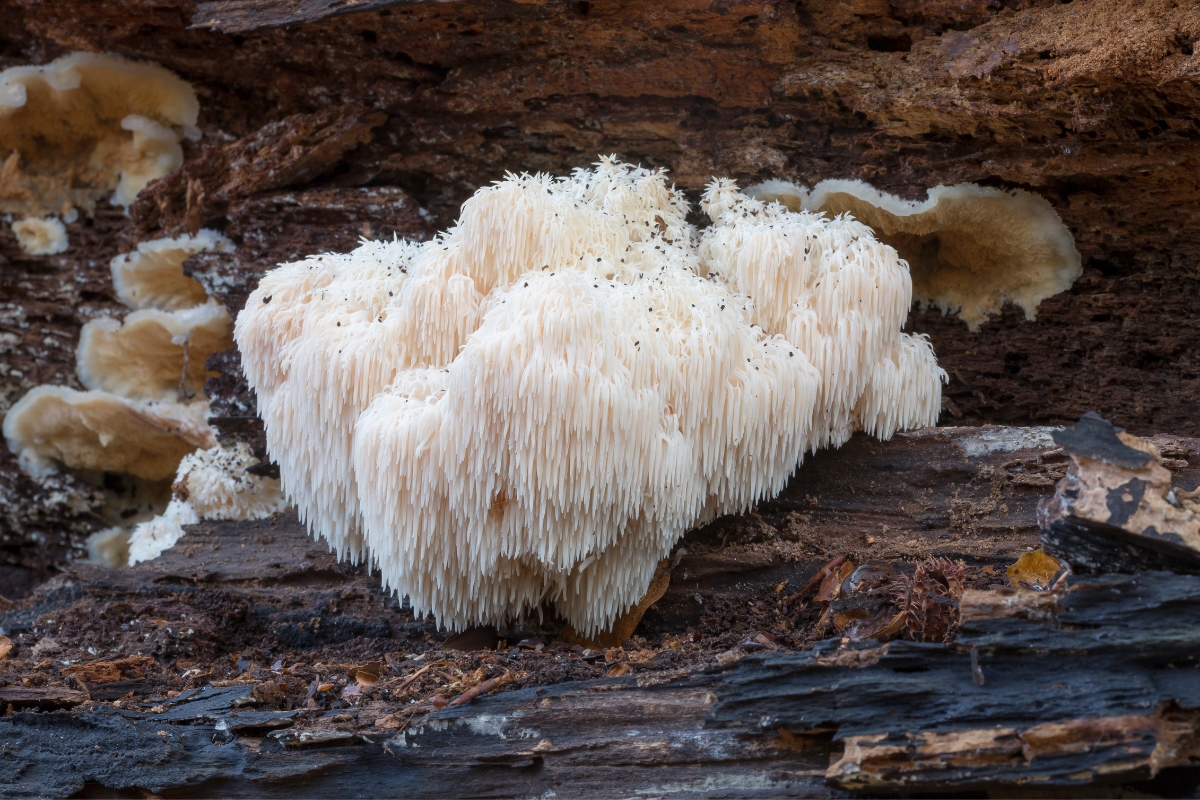
Lion’s mane is a spectacular and easy-to-identify mushroom, great for both new foragers and experienced mushroom enthusiasts. They’re one of the few “toothed” mushrooms and their quickly recognizable, white strand-like appearance makes them an ideal choice for novice mushroom hunters.
Lion’s mane mushroom has been getting more recognition lately, having the potential to provide a wealth of health benefits. According to Forbes, this mushroom presents disease-fighting properties which are anticancer and antimicrobial, potentially protecting nerves from decline or disease.
Studies surrounding the mushroom have concluded it could help to regulate blood sugar, reduce blood pressure, combat fatigue, protect heart, liver and kidney health, and even slow the process of biological aging. (That last one sounds a little far-fetched, but well – I wouldn’t say no to it.)
It may also help improve depression and brain health as well as protect against Alzheimer’s disease. All in all, this mushroom is potentially very beneficial and is quite enjoyable to eat too.
They’re easy to grow at home, and even if you can’t find them in the wild, you can grow them right on your kitchen counter!
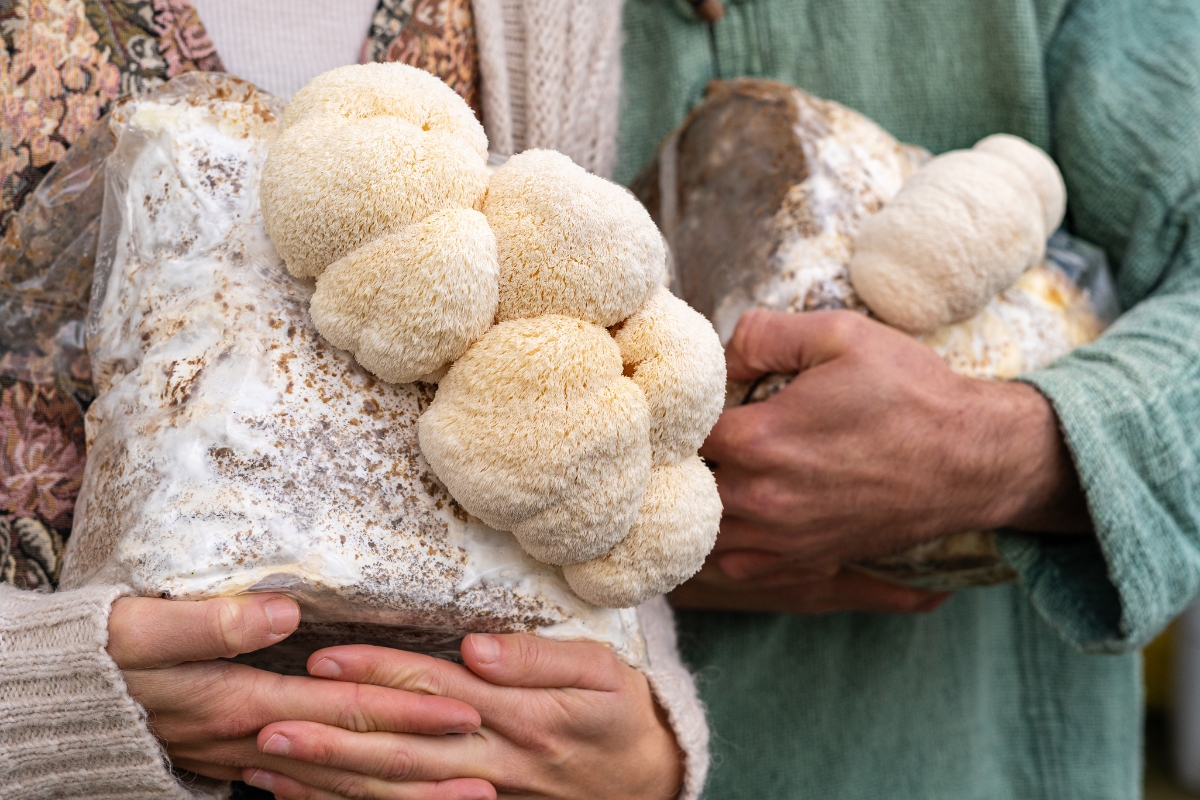
Choosing the Best Lion’s Mane
Lion’s mane (Hericium erinaceus), also sometimes called bearded tooth mushroom, grows in deciduous forests on dead and decaying hardwoods. Mushrooms like these are actually necessary for a normal ecosystem to function. These fungi thrive off dying trees, helping them to decompose and cycling nutrients back into the soil.
Lion’s mane may show up in different seasons depending on where you live. It’s a cool weather mushroom, but can fruit in fall or winter depending on the location in North America. In the Northeast, you’ll likely find it in autumn, while in the milder Southeast, it may be found in winter.
Lion’s mane season ends once hard frosts begin and the temperature dips below 20° F. Warmer winters may result in a longer mushroom season.
There are a few varieties of lion’s mane, but they’re all pretty similar and equally edible. There’s Hericium americanum, also called bear’s head, a species of Hericium found east of the Great Plains that grows on hardwoods and occasionally conifers.
There’s also coral tooth (Hericium coralloides) which is quite delicate in appearance, and western coral hedgehog (Hericium abietis) which grows more frequently along the upper West coast, growing largely on conifers like fir and hemlock.
When foraging for lion’s mane, you’ll want to look among hardwoods that have fallen, are dying or are decomposing. On standing trees, you’ll often see lion’s mane mushroom higher up. Try to grab mushrooms that are easily reachable – climbing sick or rotting trees for these mushrooms is definitely not advisable!
Your best bet is to look for fallen trees that are already decomposing and moss-covered. Common host trees include oaks, maples and beech, although some varieties do grow on conifers (especially if you’re in the Pacific Northwest).
Some varieties may possess a pinkish tint when young, which turns white as they mature, and yellows or oranges when these fungi are past their prime. Choose mushrooms that are firm, white and springy. Avoid any mushrooms with wet or brown spots.
Harvest the mushroom by cutting the fruit body at its base as close to the tree as you can. This way you can remove it in one piece.
Lion’s mane mushrooms can harbor dirt and other forest debris in their teeth, so you may want to give your mushrooms a quick wash before cooking. Once home, you can clean mushrooms in a bowl of cold water by swishing them briefly and placing on a clean towel to dry. Lion’s mane mushrooms will degrade rapidly at room temperature, so once dry it is best to move them to the refrigerator.
Mushrooms can last up to a week in the fridge. When storing in the fridge, keep away from any moisture. Store in a paper bag in the crisper drawer and check mushrooms regularly. Mushrooms that are beginning to yellow will lose flavor quickly. Mushrooms that are slimy or browning must be thrown out.
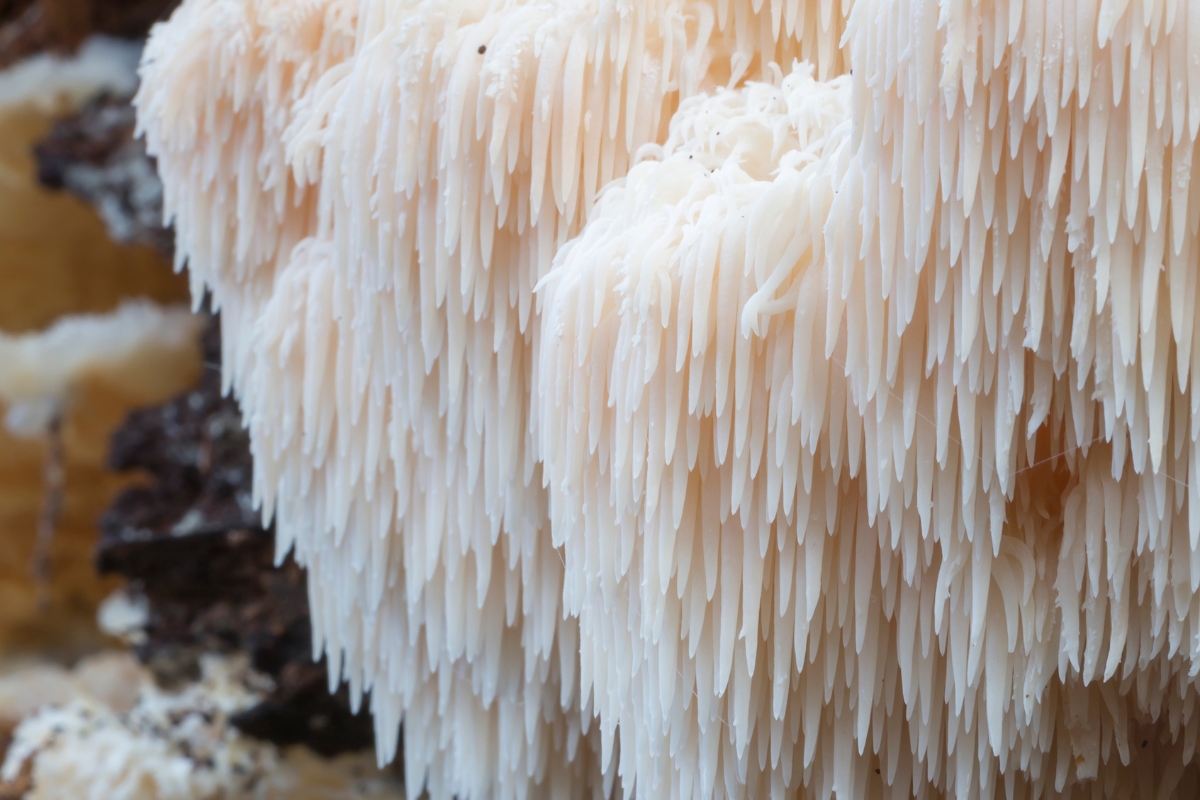
Lion’s Mane Recipes
The flavor of lion’s mane mushrooms has a subtle shellfish taste similar to lobster or crab meat. Some also pick up nutty flavors in other varieties, but overall the mushroom is nuanced and pleasant-tasting. They are often used as a vegan substitute in cooking due to their meaty texture and seafood-like flavor.
Similar to tofu, lion’s mane will absorb the flavors and sauces of the surrounding ingredients when cooked, making them a valuable and versatile ingredient. You can tear or slice mushrooms into smaller pieces for soups or sautes or cook larger mushrooms in thick slices like steaks. Always cook mushrooms before eating, and if it’s your first time trying these fringey fungi, eat a small amount first in case of a possible reaction.
Fresh Lion’s Mane Recipes
Lion’s mane mushrooms can be incorporated into a variety of starters and appetizers. You can try out lion’s mane puff pastries made by filling puff pastry sheets with cream cheese, parmesan and lion’s mane, or try a similar version made from wonton wrappers and a dash of Worchester sauce for a Chinese-style take on this tasty appetizer.
More mouthwatering starters that contain lion’s mane include vegan sushi rolls, steamed lion’s mane in butter, as well as a variety of soups and salads. North Spore has two great soup recipes that make use of this mushroom: lion’s mane mushroom egg drop soup and faux-crab mushroom soup.
Additionally, you can sample noodle soup, ramen mushroom soup, or creamy broccoli and potato soup with lion’s mane. For salads, consider a refreshing summer salad with cooked lion’s mane, leafy greens, watermelon and feta. Be sure to test out a Mediterranean mushroom and tomato salad as well, or try a lion’s mane “crab” Louie.
Appetizers
- Lion’s Mane Puff Pastries
- Lion’s Mane Crab Rangoon
- Vegan Lion’s Mane Mushroom Sushi
- Steamed Hericium with Butter and Herbs
Starters
- Lion’s Mane Noodle Soup
- Lion’s Mane Ramen Mushroom Soup
- Lion’s Mane Mushroom Soup with Broccoli and Potatoes
- Lion’s Mane Summer Salad
- Mediterranean Lion’s Mane Mushroom & Tomato Salad (Vegan, Gluten-free)
- Lion’s Mane Crab Louie
Lion’s Mane Breakfast Recipes
Lion’s mane for breakfast? It’s actually quite delicious and there are a variety of recipes to prove it. Dice and saute lion’s mane mushrooms to add to an omelet, make lion’s mane crab cakes for a brunch-worthy eggs Benedict sandwich, or try a simple breakfast sammie with lion’s mane, sliced boiled eggs and avocado.
Add lion’s mane to veggie-based breakfast burritos or use some to top savory avocado toast for a nutrient-packed morning meal. Sweeter fare can be made as well. Use powdered lion’s mane to mix into nut butter for a sweet and healthy toasted breakfast or add powder to porridge, coffee and breakfast smoothies. The flavor mixes quite well with chocolate!
- Lion’s Mane Mushroom Ham and Cheese Omelette
- Lion’s Mane “Crab” Cake Benedict Sandwich with Vegan Hollandaise
- Open-Faced Lion’s Mane Breakfast Sandwich
- Lion’s Mane Veggie Breakfast Burrito
- Lion’s Mane Avocado Toast
- Toast with Lion’s Mane Almond Butter and Berries (Vegan)
- Lion’s Mane Mushroom Porridge
- Lion’s Mane Coffee and Smoothies
- Healthy Chocolate “Milkshake” Breakfast Smoothie
Lion’s Mane Savory Main Courses
Spongy lion’s mane is an excellent component in many a dinner dish. Lion’s mane can be shredded and made into meatless crab cake patties while larger mushrooms can be seared and served on top of polenta steak-house style. Add lion’s mane to stir frys, rice bowls or pasta for more ideas. Lion’s mane mushroom pasta is a creamy delight, as is lion’s mane ragu or lighter olive oil-based sauces topped with fresh peas and parmesan.
Some find lion’s mane to taste meaty with a faint livery flavor. Lovers of liver and onions can substitute lion’s mane mushrooms for this protein with similar results. Not sure if that’s your thing? Try creamy sesame udon noodles embellished with bok-choy, sweet corn and pan-fried lion’s mane.
- Lion’s Mane Crabcakes
- Lion’s Mane Mushroom Steaks with Balsamic Pan Sauce
- Lion’s Mane Stirfry
- Lion’s Mane Mushroom Bowl
- Lion’s Mane Mushroom Ragu
- Lion’s Mane Mushroom Pasta with Peas and Parmesan
- Lion’s Mane Mushrooms As Liver And Onions
- Creamy Sesame Udon with Pan Fried Lion’s Mane Mushrooms
Lion’s Mane Drink Recipes
Lion’s mane, when powdered or extracted, can be used in a variety of drinks to make use of its vibrant health benefits. Add lion’s mane mushroom powder to coffee, teas and lattes. Hot chocolate and smoothies are two more popular means of drinking this powerful mushroom.
Add cacao powder, honey and cinnamon for a comforting hot chocolate or make a shake with bananas and cocoa nibs. Immunity-enhancing smoothies are an extremely popular way of consuming this mushroom whether in powder or extracted form. A recipe for making lion’s mane tincture has also been provided below. Use it for a brain-boosting lion’s mane smoothie made with blueberries and beets.
- Lion’s Mane Mushroom Coffee
- Lion’s Mane English Breakfast Tea
- Homemade Lion’s Mane Matcha Latte
- Mushroom Hot Chocolate with Reishi and Lion’s Mane
- Lion’s Mane Cacao Shake
- Lion’s Mane Banana Smoothie
- Lion’s Mane Tincture
Lion’s Mane Snack Recipes
A selection of snackable bites and nibbles can be made with lion’s mane mushrooms as the base. For adults, try lion’s mane skewers with chili and cumin, while little ones love lion’s mane nuggets. A vegan BLT can be made with lion’s mane browned in a marinade paired with arugula and sliced tomatoes. Another fun sandwich-style option is lion’s mane as pulled pork, slathered with barbecue sauce and topped with creamy slaw.
For more snackable options, consider adding lion’s mane powder to puddings – chocolate or chia are both great options – or try sweet, chocolatey energy balls filled with coconut, nuts, cocoa powder and lion’s mane extract. If you’re feeling like frying, make lion’s mane crisps to serve with dressing or beer-battered lion’s mane for fish-less fish tacos. A fry-free version is also available.
- Spicy Cumin Lion’s Mane Mushrooms
- Lion’s Mane Nuggets
- Lion’s Mane “BLT” Sandwich (Vegan)
- BBQ Pulled Lion’s Mane with Seasoned Slaw
- Lion’s Mane Matcha Chia Pudding
- Lion’s Mane Energy Balls
- Lion’s Mane Mushroom Crisps with Green Goddess Dressing
- Beer Battered Lion’s Mane
- Lion’s Mane Tacos With Avocado Crema Slaw
Lion’s Mane Side Dish Recipes
A nice assortment of dishes on the dinner table is a great way to ensure everyone is happy. As such, side dishes are another fantastic opportunity for lion’s mane mushrooms to shine. Add lion’s mane to a pile of pasta for a spectacular vegetarian-friendly dish with penne, creamy tomato sauce and shaved asiago. Mac and cheese dishes are yet another popular table fare. Try lion’s mane mac and cheese in a sauce made from gruyere and fontina or a simplified recipe made with mozzarella, parmesan and butter.
For similar tasting fare, try lion’s mane mushroom risotto blended with butter and parmesan cheese. It is a simple, yet versatile side dish that both children and adults can appreciate. Fried rice is another crowd-pleaser. This uncomplicated recipe involving blanched lion’s mane, greens beans, egg and soy sauce is simple enough for even novice chefs to master.
Another spectacular must-try pairing is roasted lion’s mane with sweet and tangy shallots, a side dish that pairs well with meats like lamb and beef.
- Lion’s Mane Mushroom Pasta
- Easy Lion’s Mane Mushroom Mac and Cheese
- Lion’s Mane Mushroom Risotto
- OmniPork & Lion’s Mane Mushroom Fried Rice
- Roasted Lion’s Mane Mushrooms & Sherried Shallots
Cultured & Fermented Lion’s Mane
You can ferment lion’s mane mushrooms in a couple of ways. Make a sauerkraut featuring cooked lion’s mane mushrooms, sea salt, green onions, shredded green cabbage and carrots. Ferment at room temperature for 8 to 10 days and presto – you’ve got nutrient-packed sauerkraut to serve atop sandwiches or alongside pork and sausages.
You can also try pickling lion’s mane mushrooms. Add cooked lion’s mane mushrooms to a pickle marinade of lemon juice, white vinegar, pimentos, onions, herbs and pickling salt. Another option is adding powdered lion’s mane to kombucha – the lion’s mane is great for cognition, the kombucha for digestion. Win-win.
Preserving Lion’s Mane
Lion’s mane mushrooms definitely won’t keep for long – a week at most if picked at the peak of freshness and stored correctly. Therefore, lion’s mane storage methods are an important element to consider.
The best method of preservation for lion’s mane is drying. You can slice and dehydrate the mushrooms for storing in glass jars, or pulse dehydrated mushrooms to make a lion’s mane powder.
The second best method of preservation will be freezing. Lions mane mushrooms that are frozen are good for up to 12 months when properly stored. Mushrooms should be cooked or blanched before freezing.
One last option to prevent a batch of lion’s mane mushrooms from going to waste is to make a lion’s mane tincture. Mushroom tinctures can be taken directly by dripping a few drops under your tongue or adding to drinks.
- How to Dry Lion’s Mane Mushroom
- How to Make Lion’s Mane Mushroom Powder
- How To Freeze Lion’s Mane Mushrooms
- How To Make A Mushroom Tincture (including Reishi, Lion’s Mane & Chaga
